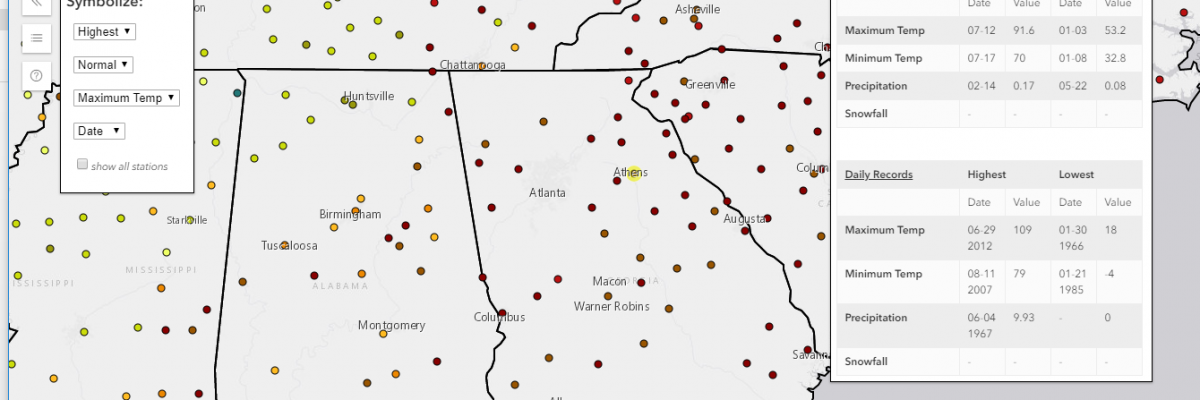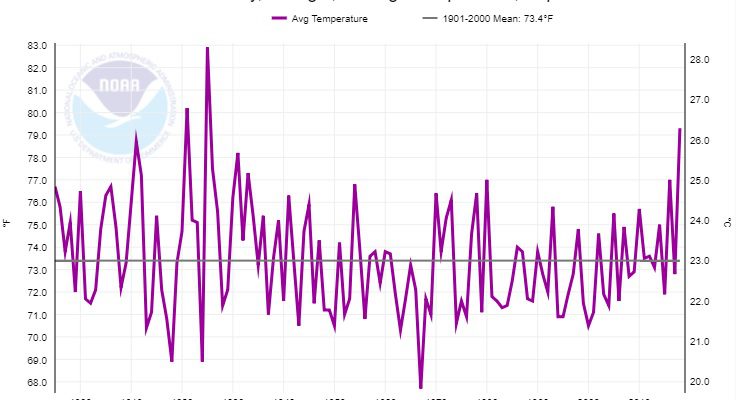Sources of weather and climate data
-

The Midwestern Regional Climate Center has a new online tool based on GIS that allows you to find record temperature and precipitation values for each station in the US. As far as I can tell, it does not included threaded records like the long combined city/airport stations in major cities, but does include the most…
Posted in: Sources of weather and climate data -

Here is an interesting site that shows what your weather will be like over the next few days by plotting the results of several different weather models side by side. When the models agree, the lines are all close together, indicating good agreement. When they diverge, then you know the models are less certain. In…
-

Changes in temperature in the Southeast over the last 100 years or so have been relatively small, especially compared to other parts of the US and the world. That has led to what we call a “warming hole” in the Southeast that gives people here the impression that global temperatures are not increasing, even though…
-

UPDATE: As of Friday November 9, it now looks like most of Florida and the coastal plains of Georgia, South and North Carolina will probably be spared a frost during this cold air outbreak, although scattered areas could still see something. Follow your local National Weather Service forecast for the latest information. I’ve been watching…
-

Here is a note from Karin Gleason of the National Centers for Environmental Information about a new dataset that provides temperature, precipitation and drought data on a county basis. This has been requested by a number of groups over the years, so if you have been looking for it, you can check it out. Here…
-

The High Plains Regional Climate Center provides ACIS maps of climate information for the US. I use these maps when I make my own climate summaries. But until now, these have only been produced as static maps. Now, HPRCC has announced that their maps are also being made available as shapefiles which you can use…
-

Once the next cold front passes through the Southeast in the next couple of days, fall weather will finally be here. For those of you who love hot weather, and those who hate it, the Midwestern Regional Climate Center has provided this web site which shows the average number of days that the heat index…